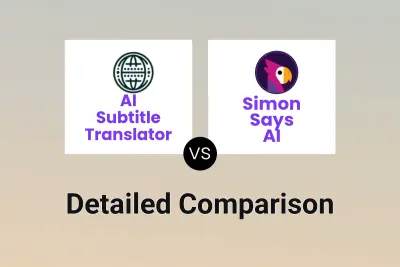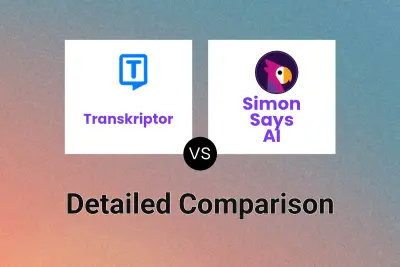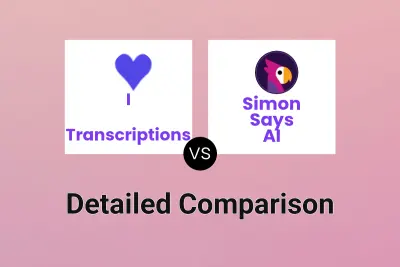 pyVideoTrans
VS
pyVideoTrans
VS
 Simon Says AI
Simon Says AI
pyVideoTrans
pyVideoTrans is an open-source software designed to translate videos from one language to another, including both subtitles and audio dubbing. It automates the entire workflow: first, it transcribes the original video's audio to generate subtitles in the source language. Then, it translates these subtitles into the desired target language. Following this, it uses text-to-speech technology to create a voiceover based on the translated subtitles. Finally, it merges the newly generated voiceover and target language subtitles with the original video footage, producing a fully translated video.Beyond its core video translation capabilities, pyVideoTrans offers standalone functionalities. Users can perform batch audio or video transcription to SRT subtitles, translate existing SRT subtitle files while preserving formatting and timestamps, and generate voiceovers directly from text or SRT files using various supported channels. It also includes auxiliary tools for merging audio, video, and subtitles, as well as separating vocals from background sounds. The tool supports both local offline models and integration with third-party APIs for its AI functions.
Simon Says AI
Leverage advanced AI for highly accurate transcription, translation, and subtitling across various audio and video formats. This platform supports over 100 languages, ensuring clear communication for global audiences. It is designed to significantly accelerate post-production workflows, enabling users to edit video content up to five times faster by manipulating text transcripts.
Integration is seamless with leading video editing software like Adobe Premiere Pro, Final Cut Pro, and DaVinci Resolve, alongside options for Mac/PC applications and even secure on-premise solutions. The service includes features such as a visual subtitle editor for precise adjustments, speaker identification, custom dictionaries for improved accuracy with specific terminology, and collaborative workspaces for teams. Security and confidentiality are emphasized, with compliance standards like GDPR and CCPA met.
Pricing
pyVideoTrans Pricing
pyVideoTrans offers Free pricing .
Simon Says AI Pricing
Simon Says AI offers Freemium pricing with plans starting from $15 per month .
Features
pyVideoTrans
- Automated Video Translation: Full workflow from transcription to final dubbed/subtitled video.
- Speech Recognition Transcription: Convert audio/video files to SRT subtitles (batch support).
- Subtitle Translation: Translate SRT files while maintaining format and timestamps.
- Text-to-Speech/Dubbing: Generate voiceovers from text or SRT subtitles using multiple channels.
- Local & API Model Support: Utilizes both offline models and third-party APIs for AI tasks.
- Auxiliary Tools: Includes functions for merging media/subtitles and separating audio tracks.
- Open Source: Code available on GitHub, free to use without functional limitations.
Simon Says AI
- AI-Powered Transcription: Highly accurate audio-to-text conversion using advanced machine learning.
- Multilingual Translation: Translate transcripts and subtitles into over 100 languages.
- Visual Subtitle Editor: Edit subtitle text, timing, and formatting with visual preview.
- Seamless Integrations: Connects directly with Adobe Premiere Pro, Final Cut Pro, DaVinci Resolve, and Avid Media Composer.
- Speaker Identification: Automatically detects and labels different speakers in the transcript.
- Collaboration Tools: Share projects, invite guests, and work together in a shared workspace.
- Multiple Export Formats: Export transcripts and subtitles in various formats including Word, SRT, VTT, and specific NLE formats.
- On-Premise Option: Secure, air-gapped transcription solution for enhanced data privacy.
- Assembly Edit Mode: Edit video footage by arranging text blocks in the transcript.
- Custom Dictionaries: Improve accuracy by adding specific names, jargon, or terminology.
Use Cases
pyVideoTrans Use Cases
- Translating educational videos for a wider audience.
- Dubbing marketing videos for international markets.
- Making personal video content accessible in different languages.
- Generating subtitles for videos automatically.
- Creating voiceovers for presentations or tutorials from text.
- Translating existing subtitle files for movies or shows.
Simon Says AI Use Cases
- Transcribing interviews, meetings, or lectures for documentation and analysis.
- Creating subtitles and captions for videos to improve accessibility and reach.
- Translating video content for international distribution and global audiences.
- Speeding up video post-production workflows by editing via transcript.
- Collaborating on transcription and subtitling projects within teams.
- Generating accurate transcripts for research purposes.
- Creating assembly edits for rough cuts based on transcribed dialogue.
Uptime Monitor
Uptime Monitor
Average Uptime
99.84%
Average Response Time
187.15 ms
Last 30 Days
Uptime Monitor
Average Uptime
99.85%
Average Response Time
205.64 ms
Last 30 Days
pyVideoTrans
Simon Says AI
More Comparisons:
-

AI Subtitle Translator vs Simon Says AI Detailed comparison features, price
ComparisonView details → -

Matesub vs Simon Says AI Detailed comparison features, price
ComparisonView details → -

AudioTranscription.ai vs Simon Says AI Detailed comparison features, price
ComparisonView details → -

VideoSubtitles vs Simon Says AI Detailed comparison features, price
ComparisonView details → -

Transkriptor vs Simon Says AI Detailed comparison features, price
ComparisonView details → -

Yescribe.ai vs Simon Says AI Detailed comparison features, price
ComparisonView details → -

I ♡ Transcriptions vs Simon Says AI Detailed comparison features, price
ComparisonView details → -

pyVideoTrans vs AITransDub Detailed comparison features, price
ComparisonView details →
Didn't find tool you were looking for?